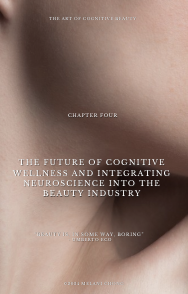Clean Green Silicones - Alkanes - C-13-15

Biodegradable Silicones Called C13-15 Alkane
It is very impressive to see consumers taking ownership of what they are putting on their skin through reading ingredient lists. Though this is a fantastic start, ingredient lists do not contain all the necessary information to tell an accurate story about the origin and lifespan of materials. Researchers and scientists determine the safety and appropriate applications for raw materials by conducting long term testing procedures and a global network of data collection far before they reach the manufacturing and retail industry. Often, raw materials are discovered five to ten years before they are developed into commercial preparations in several molecular forms required for our food and cosmetics products. Today, we will be talking about C13-15 Alkane, and where it comes from, but in order to do that, we will first look at some concepts.
Industry - INCI Names
The International Nomenclature of Cosmetic Ingredients (INCI) is a global set of standards for naming ingredients in skincare and cosmetics, in order of concentration. Some exceptions apply: for example, ingredients present at less than 1% can be written in an order of consideration. The regulatory name is not determined by a brand or manufacturer of the cosmetic, and therefore, often does not contain the whole story.
Here is an example to help understand variations of the principles of INCI.
-
A major ingredient in many cosmetics is "deonized water” which is water that has been treated to remove ions and minerals. In Canada, you must write ‘Water’ and ‘Eau’ (English and French!) as ‘Water/Eau’ or alternatively you can use ‘Aqua’ – and those are the only options.
-
Dimethicone: You may have read about dimethicone and know it is a silicone that can sometimes block pores (comodegenic). However, the INCI name ‘dimethicone’ refers to a very wide range of silicone fluids of a certain structure. Some dimethicones are very thin and dry, and some are thick and feel quite oily; some are non-comodegenic and safe for sensitive skin. Even an experienced formulator would not be able to tell with 100% certainty, looking at only the final product, which dimethicone is present in the formula. There could be 5 different silicone fluids present, and the ingredient list would still just state ‘dimethicone’ once.
INCI ingredient listing is a safe and globally regulated practice and not meant for the purpose of deconstructing ingredient by ingredient on a consumer level.
Chemistry of Alkanes
Some basic chemistry to start: alkanes are a class of hydrocarbons. Hydrocarbons, by definition, are composed exclusively of carbon and hydrogen atoms. More specifically, alkanes are classed as such when all the carbon-carbon bonds are single (‘saturated’) and form a straight or branched chain (no formations). And are given chemical names based on the number and orientation of carbon atoms. Again, INCI names are not chemical names and vice-versa.
Formulation Foresight
C13-15 Alkane is a light emollient (protective) that is used in skincare, body care, makeup, haircare, sun care, and other toiletry applications. The natural born material can be light in texture and low to no odour. It is used as an alternative to silicones, especially in silicone-free formulations. Alkanes can be sustainably and ethically sourced very easily and every established global market relies on eco-strategic partnerships with farmers and agricultural bases. By chemical nature, coconut and plant sugar derived alkanes are stable, which applies to formulating cosmetics for extreme conditions (such as intense climates or highly acidic formulas). A safely modified oil by product that can be used in natural, light, oil-free formulations as it is not chemically classified as an oil product. Benefits all around this raw material and it's level of sustainability.
Sources of Alkanes
Historically, alkanes are primarily used as fuels for homes, ovens, industrial purposes, and form a major component of gasoline (petrol). Derivatives of alkanes are also found in many other uses: plastics, synthetic rubber, pesticides, paints, and coatings, products that are used in every day safety materials and medical industry. A major source of alkanes is crude oil and natural gas.
All of this may cause you to think that the C13-15 Alkane that is present in your favourite serum is not sustainably sourced. However, raw material suppliers have sourced C13-15 Alkane using a sustainable and green alternative: plant sugar. It is a non-GMO, renewable plant source. Depending on the supplier of this material, a fact which is also not encompassed in an ingredient listing, the material is ECOCERT approved, USDA certified bio-based. Additionally, as alkanes are organic compounds, it is fully biodegradeable. Now you can see why formulators are successfully moving onward and upward with beautifully textured cosmetic ingredients that can also be clean green and safe
Not To Be Mistaken
The source or origin of the ingredient does not affect the chemical nature or structure described here, nor does it change what is listed in the ingredients on product lists. This proves that relatively little data is conveyed or established about the whole story about cosmetics ingredients , and this shows how necessary it is to have trained and informed chemists and formulators educating the public on cosmetic formulas, to avoid the spread of misinformation.
Researcher - Saima Seer, Chemist
Also in MC2 BLOG

Welcome to The Future of Neuro Beauty
The understanding of Cognitive Beauty opens new possibilities for beauty treatments that go beyond surface-level aesthetics and delve into the underlying neurobiology of beauty and the diverse world of aesthetics.

Your Skin Is A Quantum Communicator
Your skin is a sensory force field, constantly receiving and emitting powerful signals. It’s how you interact with the world and how the world interacts with you.
Your skin is a quantum communicator—it picks up vibrations, temperature changes, even emotional energy from others - Melani Chong

The Skin - Brain Axis - How It works
Melani Chong Neuro Beauty Expert ::: The Skin-Brain Superhighway
Did you know your skin and brain have a hotline to each other? Yep, they're chatting 24/7 through a superhighway of nerves and biochemicals. Stress, mood, and even how well you sleep can affect your glow-up game.
Because understanding this connection gives you the power to take control of your skin's story. Managing stress, sleeping well, and using neurocosmetic ingredients can help keep both your mind and skin in harmony.

